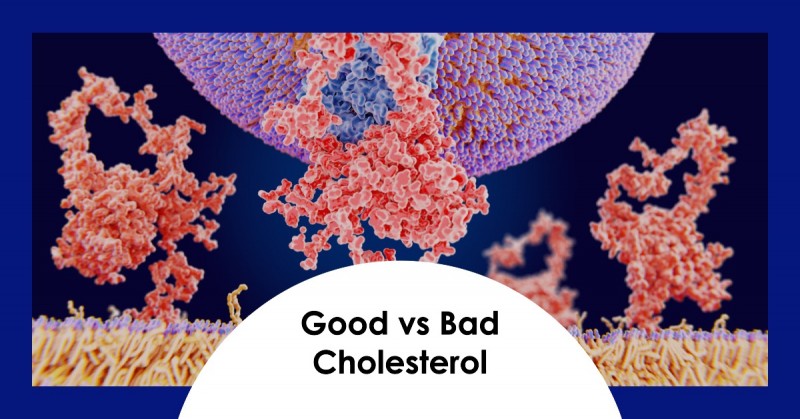
When it comes to heart health, understanding cholesterol is crucial. You may have heard about good and bad cholesterol, but what do these terms really mean? In this article, we will explore the essentials of good and bad cholesterol, their impact on your health, and how you can maintain healthy cholesterol levels. So, let's dive in and uncover the secrets to a healthy heart!
1. What is Cholesterol?
Cholesterol is a waxy substance found in your body that plays a vital role in various functions. It is produced by your liver and can also be obtained from certain foods. Cholesterol is essential for the production of hormones, vitamin D, and substances that help digest food. However, having too much cholesterol, particularly bad cholesterol, can be detrimental to your health.
2. Differentiating Good and Bad Cholesterol
When we talk about good and bad cholesterol, we are referring to two types of lipoproteins: high-density lipoprotein (HDL) and low-density lipoprotein (LDL). HDL is commonly known as good cholesterol, while LDL is often referred to as bad cholesterol. Understanding the differences between these two types is essential for managing your cholesterol levels effectively.
HDL (Good Cholesterol)
HDL cholesterol acts as a scavenger in your bloodstream, collecting excess cholesterol and transporting it to your liver for removal. It helps remove bad cholesterol from your arteries, reducing the risk of heart disease.
LDL (Bad Cholesterol)
LDL cholesterol, on the other hand, can build up in the walls of your arteries, forming plaque. This buildup narrows the arteries and restricts blood flow, increasing the risk of heart disease.
3. The Role of Good Cholesterol
Good cholesterol, or HDL, plays a crucial role in maintaining your heart health. Its primary function is to remove excess cholesterol from your bloodstream and transport it to your liver for disposal. By doing so, it helps prevent the buildup of plaque in your arteries, reducing the risk of heart disease.
4. Understanding Bad Cholesterol
Bad cholesterol, or LDL, is a major contributor to the development of heart disease. When there is an excessive amount of LDL cholesterol in your bloodstream, it can accumulate on the walls of your arteries, forming plaque. Over time, this plaque buildup can narrow your arteries, restricting blood flow and potentially leading to heart attacks or strokes.
5. How Cholesterol Affects Your Health
The balance between good and bad cholesterol in your body has a significant impact on your overall health. Maintaining healthy cholesterol levels is crucial for reducing the risk of heart disease, stroke, and other cardiovascular conditions. High levels of bad cholesterol and low levels of good cholesterol can contribute to the development of atherosclerosis, a condition characterized by the hardening and narrowing of the arteries.
Impact of High Bad Cholesterol:
Importance of Sufficient Good Cholesterol:
Conclusion
In conclusion, understanding the essentials of good and bad cholesterol is crucial for maintaining a healthy heart. By differentiating between these two types and taking appropriate measures, such as adopting a heart-healthy diet, engaging in regular physical activity, and seeking professional guidance, you can effectively manage your cholesterol levels. Remember, a healthy lifestyle is the key to preventing heart disease and leading a long and vibrant life.
National Ceviche Day: Exploring the Health Benefits of Ceviche
Insilco Medicine Commences Human Trials for Groundbreaking AI-Designed Drug